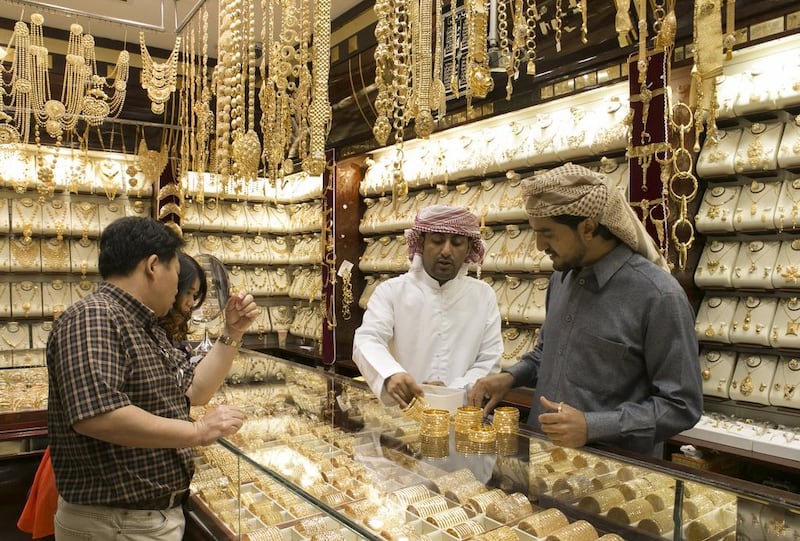Gold jewellery demand in the UAE fell by 26 per cent in the second quarter compared with a year earlier as overall demand in the Middle East declined because of high gold prices and the oil price rout, the World Gold Council said.
The London-based market development body said in its report that demand in the UAE slid to 11.1 tonnes in the three months to June 30 from 14.9 tonnes a year earlier.
“Demand across the Middle East was, unsurprisingly, poor given the environment of high gold prices, relatively low oil prices and continued geopolitical unrest,” the council said.
Overall gold jewellery demand in the Middle East decreased by 22 per cent year-on-year to 45 tonnes.
The price of gold has surged by 27 per cent this year owing to wobbly economic growth and low interest rates. Gold prices tend to fall when interest rates rise because the precious metal bears no interest. A strong dollar also makes the dollar-denominated commodity expensive for buyers in other currencies.
The gold rally comes after prices fell last year for the third year in a row, shedding 11 per cent as the US increased its interest rates in December for the first time in a decade and the dollar rallied against other currencies.
The steepest decline in the region was in Egypt, with a 40 per cent drop to 5.3 tonnes because of the local currency devaluation that made gold expensive for consumers.
Turkey also suffered from weak demand in the second quarter owing to political volatility, lower tourism revenue, rising unemployment and reduced exports from Russia.
Iran, however, registered a year-on-year demand increase of 10 per cent to 8 tonnes, thanks to optimism from the lifting of sanctions in January.
The UAE reported the sharpest year-on-year decrease in demand for gold bars and coins, of 40 per cent, to 1.4 tonnes. It was followed by Egypt, with a 35 per cent year-on-year slide to 0.8 tonnes. Again, the only exception was Iran, with a 2 per cent year-on-year increase to 7.2 tonnes.
Globally, gold demand soared by 15 per cent year-on-year to 1,123.4 tonnes, driven by investments in bars, coins and exchange-traded funds.
dalsaadi@thenational.ae
Follow The National's Business section on Twitter





